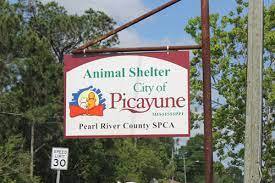With Ernesto threatening, Bush says still-struggling Gulf Coast has ‘a sense of renewal’
Published 5:08 pm Tuesday, August 29, 2006
President Bush suggested Monday that Washington may not be willing to send more than the $110 billion already approved for a Gulf Coast still struggling to come back from Hurricane Katrina’s battering, and said a full recovery is likely to take years.
Of the $110 billion in hurricane aid approved by Congress since Katrina struck a year ago Tuesday, just $44 billion has been spent. The Bush administration has released $77 billion to the states, reserving the rest for future needs.
“Hopefully that’ll work. Hopefully that’s enough,” Bush said after visiting a company here that has restarted its business of building and repairing boats. “It’s certainly enough to get us through the next period of time.”
Despite a focus on the positive during a two-day Gulf visit to mark the anniversary of the hurricane that still haunts his presidency, Bush was sensitive to the massive need that still exists.
“It’s an anniversary, but it’s not an end. Frankly it’s just the beginning,” said the president.
Asked when the recovery might be complete, Bush said: “It’s hard for me to say. I would say years, not months.”
Earlier Monday, the president returned to the first scene he saw a year ago of Katrina’s devastation, in nearby Biloxi, Miss., and declared “a sense of renewal.”
“Amazing what the world looked like then and what it looks like now,” Bush said, marveling at the air conditioning and electrical service in the newly constructed home visible behind him.
When Bush first saw the neighborhood four days after Katrina’s strike last Aug. 29, it was littered by debris of all sizes, with cars in trees, homes smashed to bits and nearby floating casinos tossed onto dry land.
Bush acknowledged “there’s still challenges.” Other parts of the neighborhood, which is only rebuilt in patches, and a woman he consoled on a trip here last year demonstrated just that. Sought out by the White House to meet Bush again, she said before his remarks that she has come far — but not far enough.
Then, Bronwynne Bassier had returned briefly from Alabama, clutching trash bags, to search the rubble of her former home for clothes for her young son. Sobbing uncontrollably, she told Bush she had lost everything.
On Monday, newly married and now Bronwynne Lesso, she said her old house has been demolished to a concrete slab. She lives in a FEMA trailer with her husband and 3-year-old, and is still trying to figure out how to get a job and whether she can rebuild.
“When they take the FEMA trailers away, I don’t know what I’m going to do,” she said.
Still, like many in Mississippi, where the response and rebuilding effort have gone better than in Louisiana, Lesso doesn’t blame Bush.
“One year later, he hasn’t forgotten about us,” she said.
Bush was ending the day in harder-hit and less-recovered New Orleans, at dinner with state and local officials, where he had a day of events scheduled for Tuesday. It was his 13th post-hurricane journey to the region, and his first in three months.
“The federal government stands with you still,” the president said under a scorching sun, his lectern set up in the dirt yard of what looked to be an abandoned home.
His travels were shadowed by worries that a new tropical storm could bring the first test of his promise that the botched post-Katrina response will not be repeated.
Tropical Storm Ernesto cut a path through the Caribbean and put Florida on emergency footing. Forecasters believe Ernesto will emerge with some force into the Gulf of Mexico later this week.
Before he left the White House Monday, Bush and top federal disaster officials conferred on Ernesto in a briefing led by Federal Emergency Management Agency director R. David Paulison. White House spokeswoman Dana Perino said Florida had not requested federal assistance or support.
A poll earlier this month found two-thirds of Americans still disapprove of the president’s handling of Katrina. Democrats are trying to make the case that he and the Republican Party should be held accountable for failing storm victims, then and now.
“I think the American public is going to be very, very surprised to know this recovery is way, way behind what their expectations would have been,” Rep. James Clyburn, D-S.C., said after a tour with other Democratic lawmakers through devastated areas of New Orleans.
The president’s first stop was lunch at the Biloxi Schooner Seafood Restaurant, owned by Joe Lancon, who recently reopened less than two miles from where Katrina destroyed his two other restaurants. Bush dined on fried shrimp, stuffed crab and gumbo and reassured state and local officials that the federal government would continue to help with the rebuilding.
“I was just commenting upon how clean the beaches were,” the president said at the end of lunch. “That wasn’t a given a year ago. Now they speak to the hope.”
The Mississippi coastline here is much changed from Bush’s last view of it in May, when debris still hung from trees and was stacked in large piles. Some devastated structures remain in extreme disrepair, but the stretch of beachfront property is mostly taken up by vacant lots where gracious antebellum homes once stood, with a few new or being-constructed buildings and little debris in evidence. Downtown Biloxi appears a beehive of construction activity.
Bush’s itinerary for the two days looks a lot like previous trips. The White House released almost no information on where Bush was visiting until minutes before he was to arrive, in part to lessen cumbersome security needs. But the practice also prevents him from more freely interacting with residents.
On Wednesday, he shifts gears with appearances at political fundraisers in Arkansas and Tennessee.




